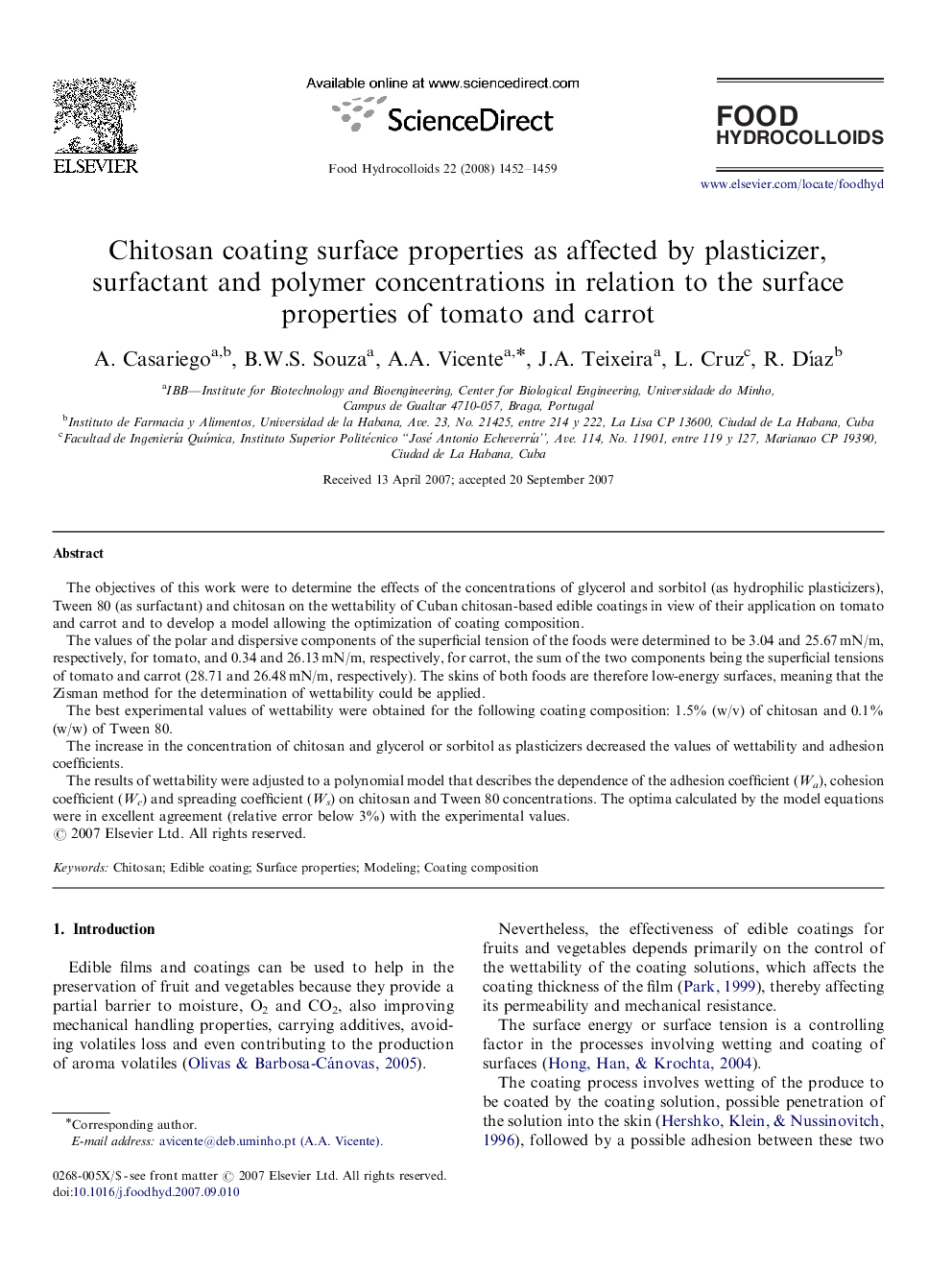| Article ID | Journal | Published Year | Pages | File Type |
|---|---|---|---|---|
| 605766 | Food Hydrocolloids | 2008 | 8 Pages |
The objectives of this work were to determine the effects of the concentrations of glycerol and sorbitol (as hydrophilic plasticizers), Tween 80 (as surfactant) and chitosan on the wettability of Cuban chitosan-based edible coatings in view of their application on tomato and carrot and to develop a model allowing the optimization of coating composition.The values of the polar and dispersive components of the superficial tension of the foods were determined to be 3.04 and 25.67 mN/m, respectively, for tomato, and 0.34 and 26.13 mN/m, respectively, for carrot, the sum of the two components being the superficial tensions of tomato and carrot (28.71 and 26.48 mN/m, respectively). The skins of both foods are therefore low-energy surfaces, meaning that the Zisman method for the determination of wettability could be applied.The best experimental values of wettability were obtained for the following coating composition: 1.5% (w/v) of chitosan and 0.1% (w/w) of Tween 80.The increase in the concentration of chitosan and glycerol or sorbitol as plasticizers decreased the values of wettability and adhesion coefficients.The results of wettability were adjusted to a polynomial model that describes the dependence of the adhesion coefficient (Wa), cohesion coefficient (Wc) and spreading coefficient (Ws) on chitosan and Tween 80 concentrations. The optima calculated by the model equations were in excellent agreement (relative error below 3%) with the experimental values.
